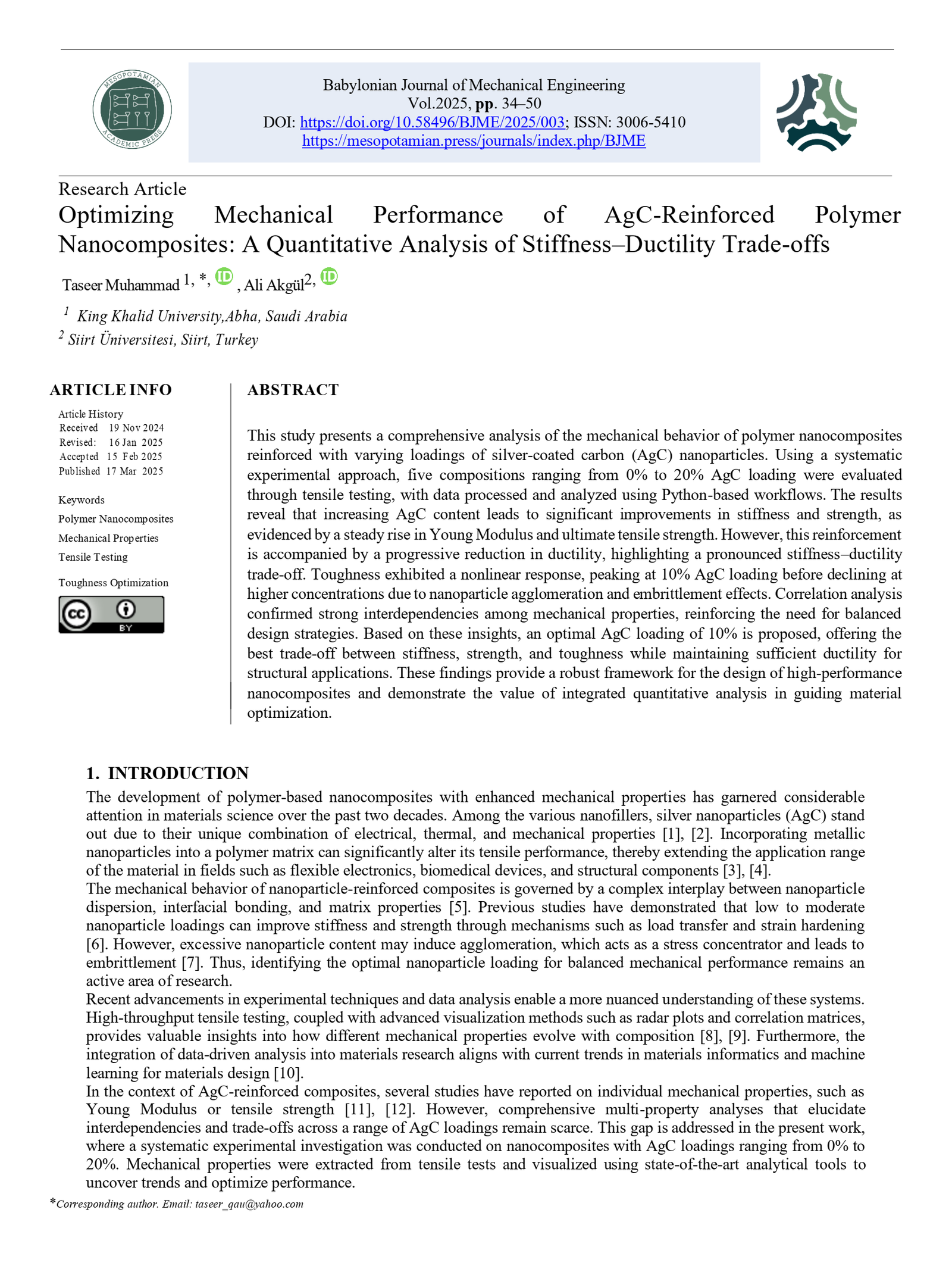Optimizing Mechanical Performance of AgC-Reinforced Polymer Nanocomposites: A Quantitative Analysis of Stiffness–Ductility Trade-offs
Main Article Content
Abstract
This study presents a comprehensive analysis of the mechanical behavior of polymer nanocomposites reinforced with varying loadings of silver-coated carbon (AgC) nanoparticles. Using a systematic experimental approach, five compositions ranging from 0% to 20% AgC loading were evaluated through tensile testing, with data processed and analyzed using Python-based workflows. The results reveal that increasing AgC content leads to significant improvements in stiffness and strength, as evidenced by a steady rise in Young Modulus and ultimate tensile strength. However, this reinforcement is accompanied by a progressive reduction in ductility, highlighting a pronounced stiffness–ductility trade-off. Toughness exhibited a nonlinear response, peaking at 10% AgC loading before declining at higher concentrations due to nanoparticle agglomeration and embrittlement effects. Correlation analysis confirmed strong interdependencies among mechanical properties, reinforcing the need for balanced design strategies. Based on these insights, an optimal AgC loading of 10% is proposed, offering the best trade-off between stiffness, strength, and toughness while maintaining sufficient ductility for structural applications. These findings provide a robust framework for the design of high-performance nanocomposites and demonstrate the value of integrated quantitative analysis in guiding material optimization.
Article Details
Issue
Section

This work is licensed under a Creative Commons Attribution 4.0 International License.
